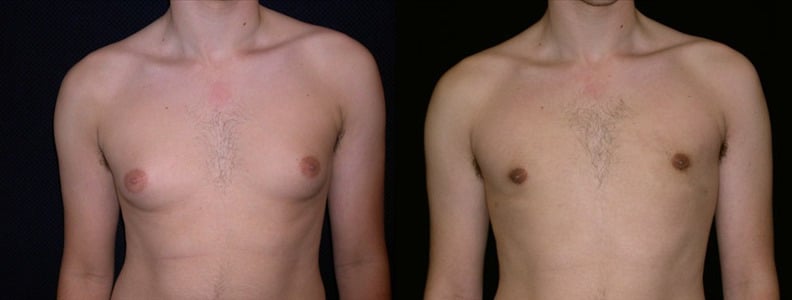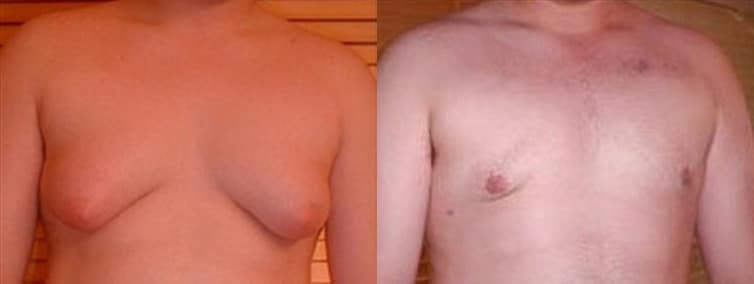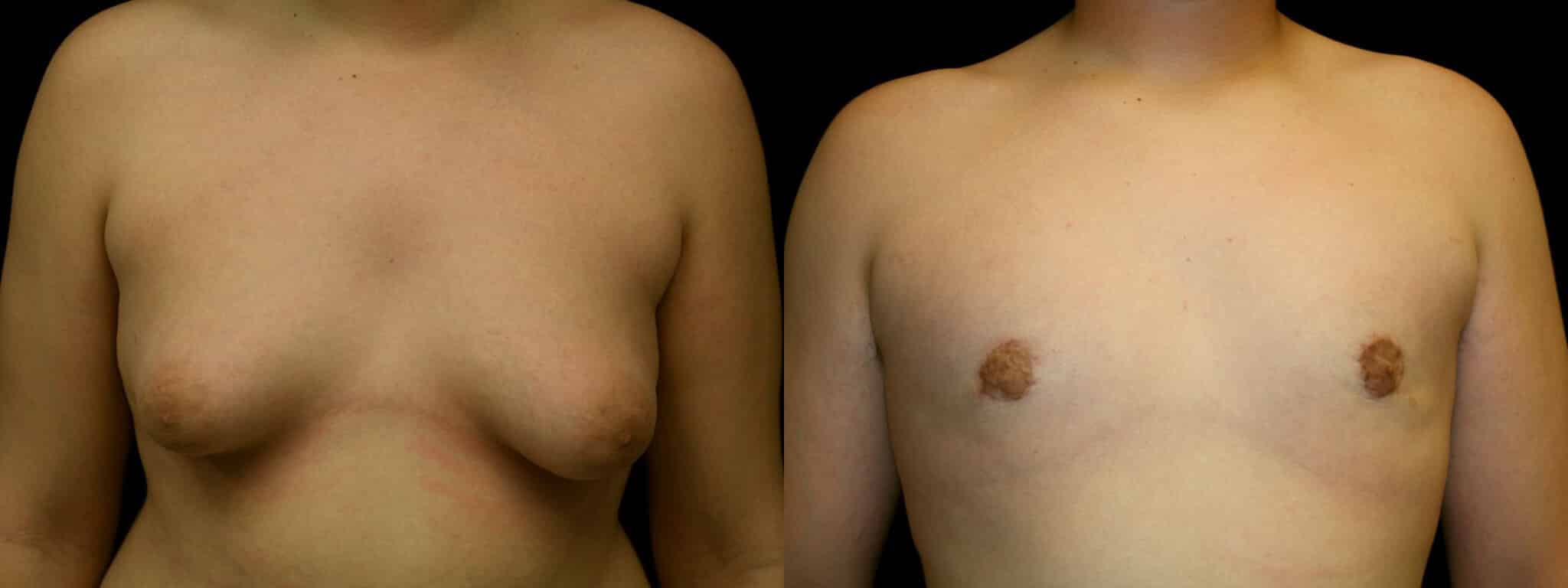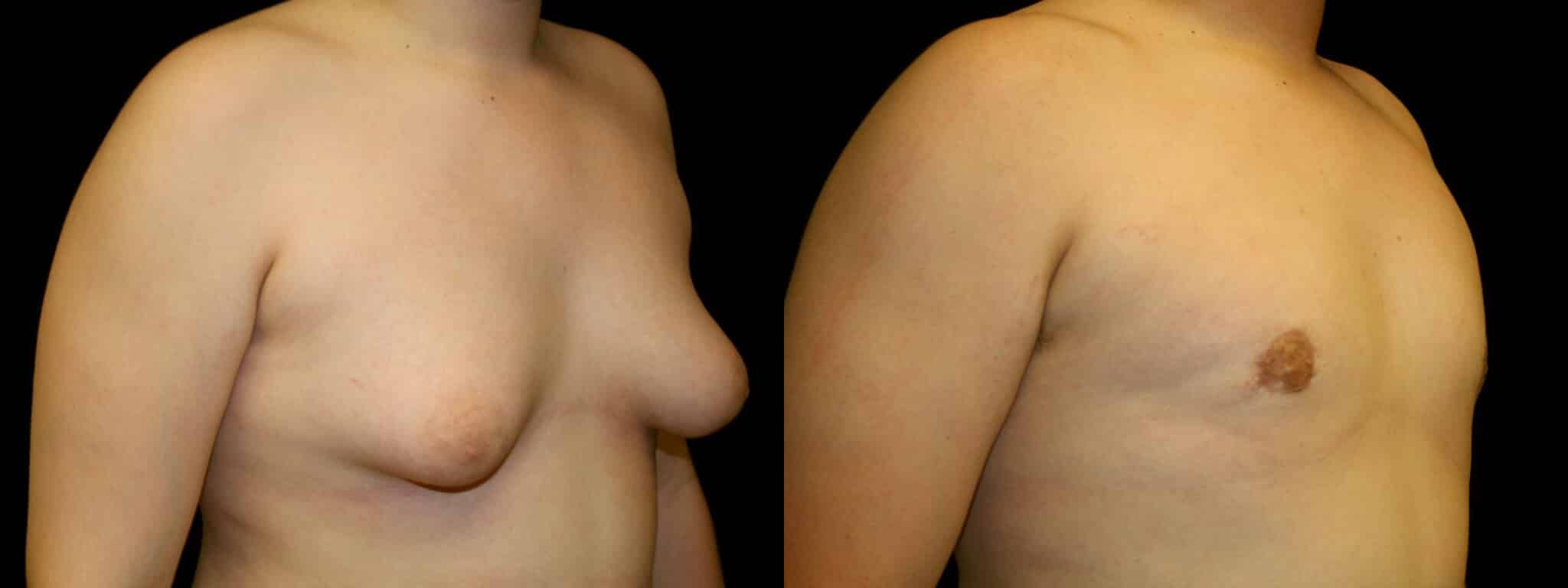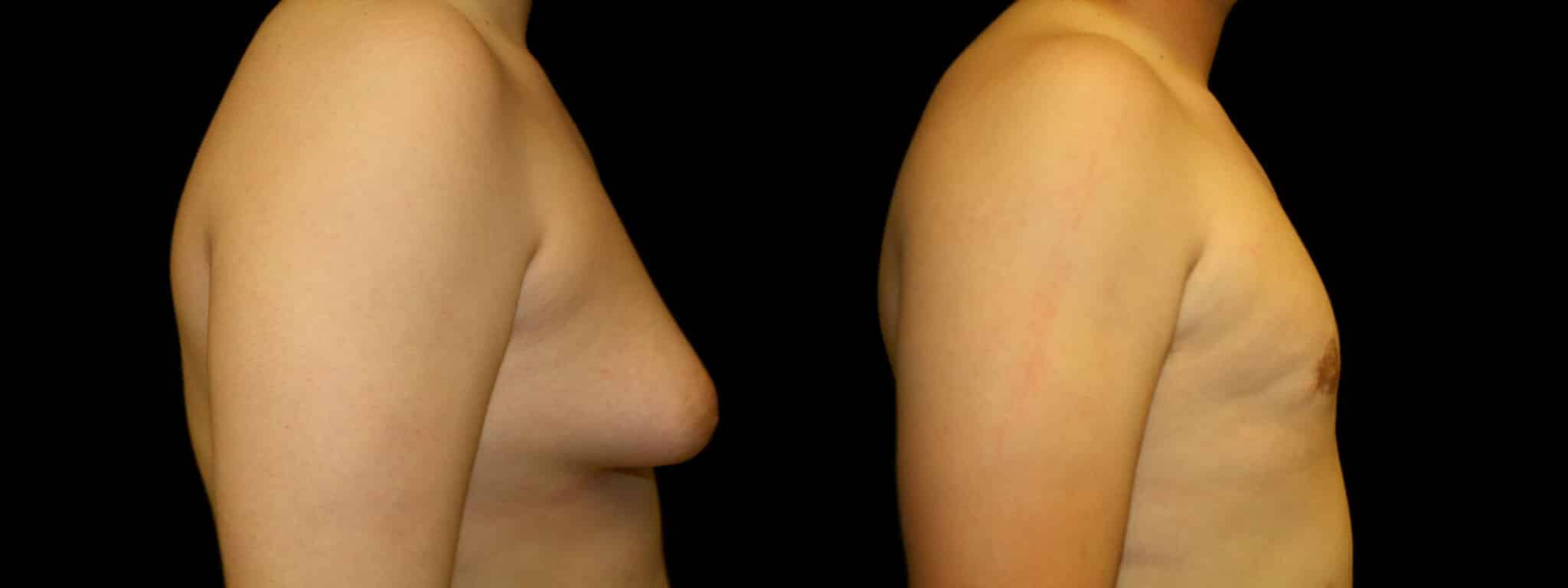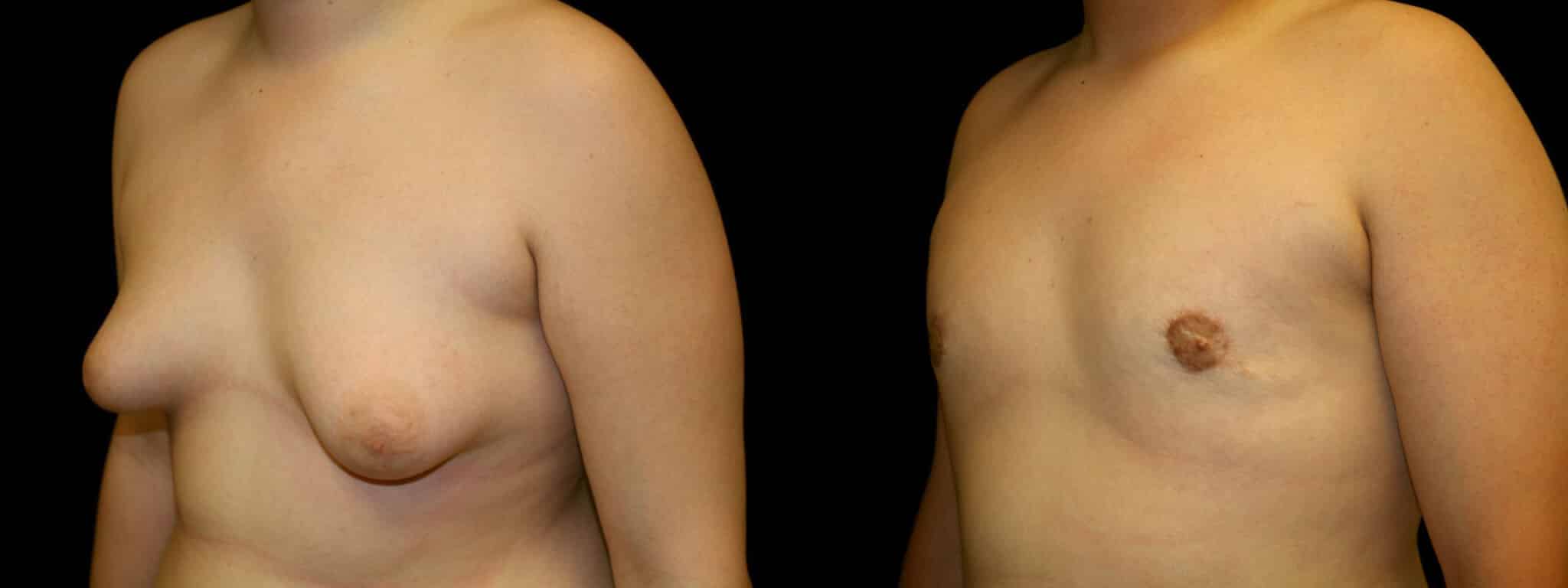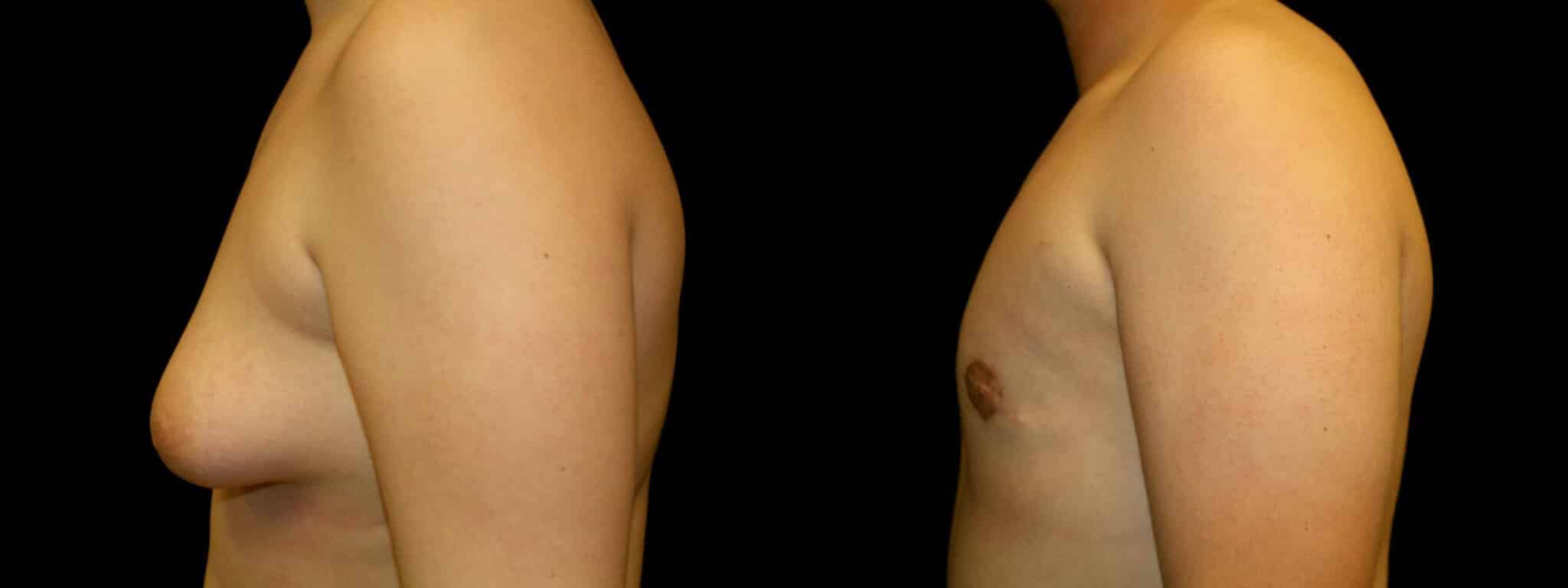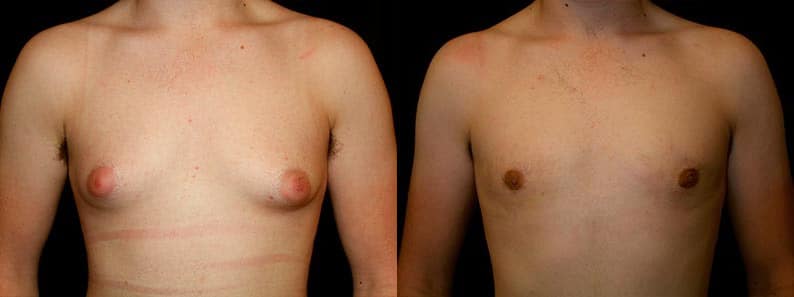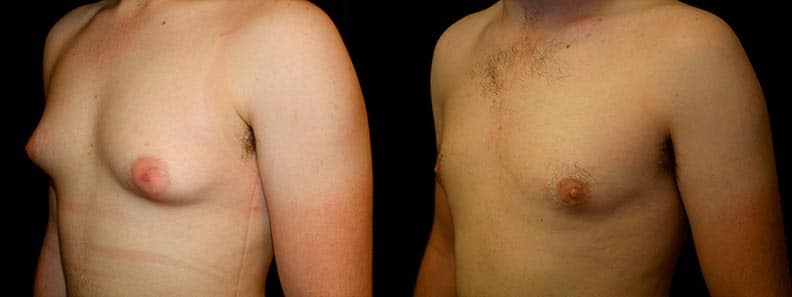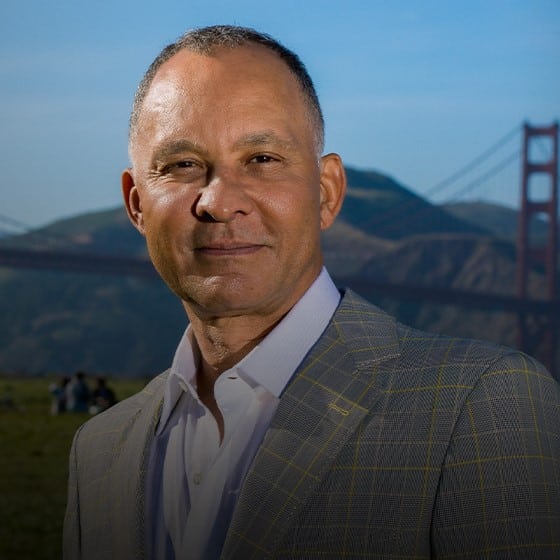Quick Links
Adolescent gynecomastia develops around the ages of 10-13 and affects up to 65% of adolescent boys. Gynecomastia can have a tremendous impact on these developing boys’ self-esteem which is why Dr. Delgado works with the highest level of care and the best medical treatment options to treat his patients.
Causes of Adolescent Gynecomastia
Adolescent gynecomastia or pubertal gynecomastia is most often caused by a hormonal imbalance between the female hormone estrogen and the male hormone testosterone. A higher level of estrogen in adolescent boys causes increased growth of male breast tissue which leads to gynecomastia. It is unfortunately common for these young men to be teased or bullied because of their gynecomastia because it is often not understood that this is a medical condition. Breast development is often attributed to weight gain, but this is not true. Young men develop gynecomastia from the growth of excess breast tissue, not fat, and their breast enlargement may also include breast pain in one or both breasts.
Anabolic steroid use in young athletes may also trigger breast tissue proliferation since these steroids decrease testosterone production. This form of breast enlargement is called steroid-induced gynecomastia. Other possible causes of gynecomastia, although much less common, include chronic liver disease, primary or secondary hypogonadism, or testicular tumors. If you have unrelated body pain and breast enlargement, certain tests can be performed to rule these possible factors out.

Meet DR. DELGADO
Board-Certified Plastic Surgeon
Dr. Delgado is an award-winning gynecomastia surgeon with 30+ years of experience treating some of the most complicated cases of male breast growth around the world. He is also the owner and operator of Gynecomastia.org, the largest gynecomastia forum in the world that has the goals of educating, supporting, and offering guidance to those men and families affected. Dr. Delgado is an expert in the field and donates his time toward both the treatment of gynecomastia and the advocacy of education in the surgical community.
VIEW FULL BIOTreatment Options for Adolescent Gynecomastia
A high percentage of young boys have palpable breast tissue so many cases will go away on their own. However, persistent pubertal gynecomastia will likely have to be treated with surgery. Gynecomastia that persists after two years becomes firm, tender breast tissue that is impossible to lose with diet and exercise alone.
Adolescent patients with gynecomastia still have good skin quality, so surgery is often very successful. Since adolescent boys still have young, elastic skin, it will easily contract back to the muscle after the breast tissue is removed. One of the most common surgeries performed for adolescent gynecomastia is gland excision with liposuction. This will remove glandular tissue and contour the chest for a more masculine appearance.
Dr. Delgado usually performs this surgery for adolescents around the ages of 13 and 14 and believes the best time is when their gynecomastia is beginning to affect them socially and psychologically. Gynecomastia surgery can be life-changing for adolescent boys whose self-esteem is constantly being challenged by their enlarged breasts.
Alternative Treatment Options
The FDA is currently investigating drug treatment for adolescent gynecomastia as an alternative to surgery. As of 2014, no drugs have been approved for the treatment of gynecomastia. Drugs that are currently being researched include tamoxifen, an estrogen receptor blocker; danazol, an androgen or testosterone medication to block estrogen production; and dihydrotestosterone, an androgen or steroid hormone that is an active form of testosterone.
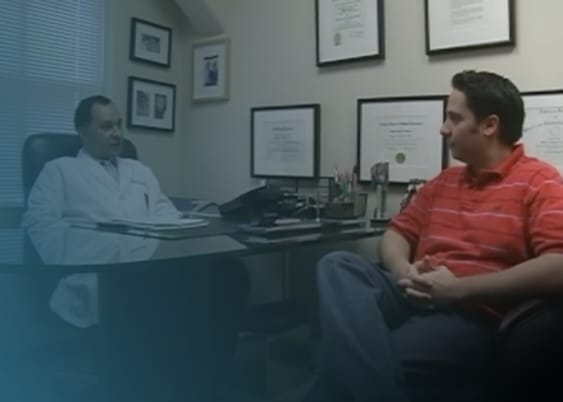
The Story of Three Men
 Featured Blog
Featured Blog
Adolescent Gynecomastia Treated in One Stage Surgery
Gynecomastia to the Extreme ★★★★★ Ratings: 4.74 -118 Reviews San Francisco, CA-Men with severe gynecomastia, who choose to have male breast reduction surgery, will find that they most likely will need their surgery done in two stages. Dr. Delgado found that by dividing the surgery into two stages that he…
View PostWhy Choose Dr. Delgado?
Dr. Delgado specializes in gynecomastia treatment and has the necessary experience to effectively treat gynecomastia and alleviate your or your son’s physical and emotional distress. Dr. Delgado believes in compassionate, comprehensive care and will only consider surgery when it is necessary. His years of experience have given him a keen eye to detect true gynecomastia from pseudogynecomastia or fat buildup that may improve over time, especially with adolescents. Trust the care of Dr. Delgado to find an effective treatment plan that gets down to the root cause of your enlarged male breasts.
Schedule a Consultation
If your son is starting to avoid swimming, the beach, and other social activities, it may be time to consult Dr. Delgado about treating their gynecomastia. He will work with you, your pediatrician, and an endocrinologist so that every patient feels comfortable having surgery and can expect great results.

